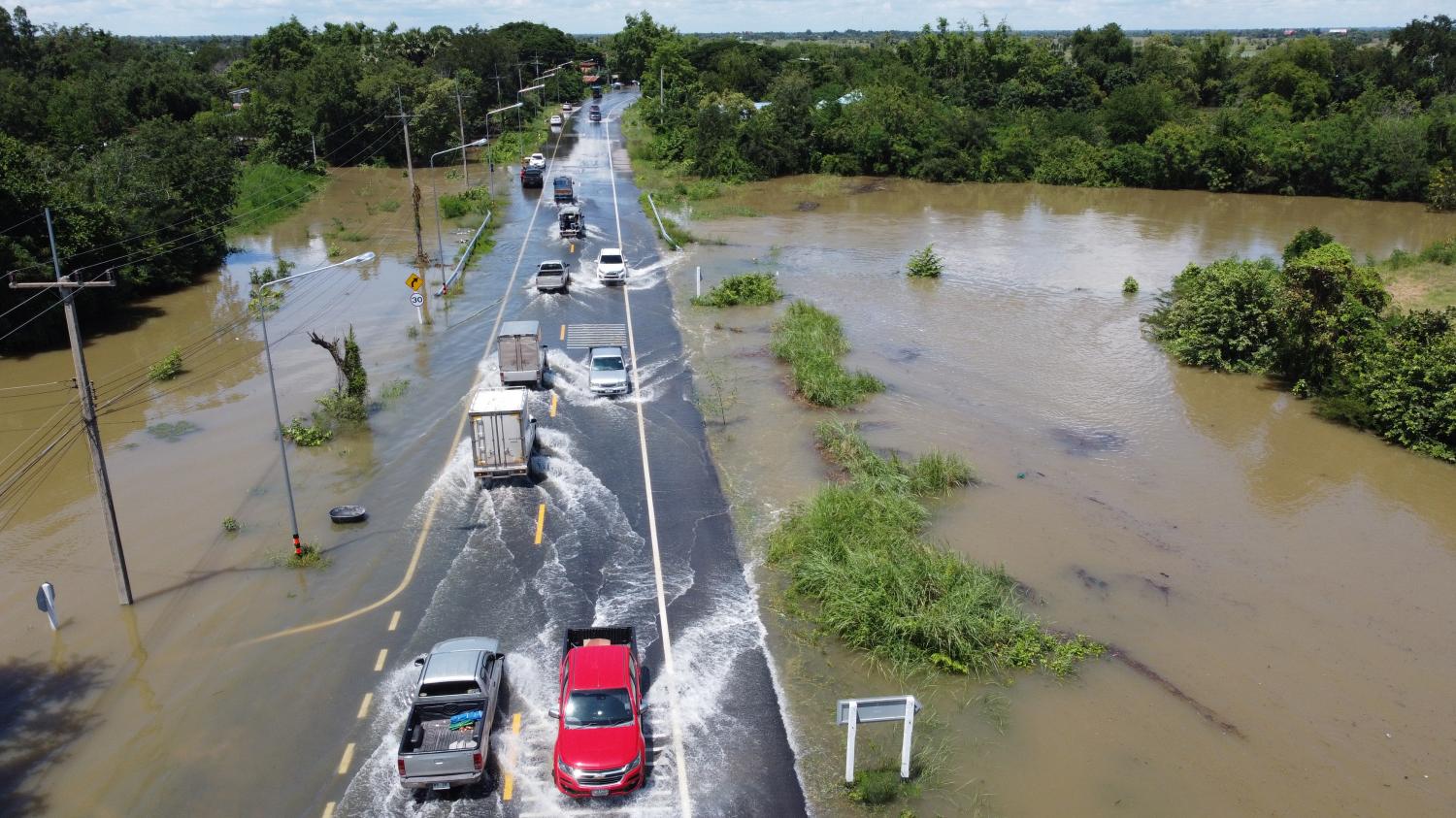
Six people have been killed in catastrophic floods which are sweeping through at least 30 provinces and threatening more than 70,000 families, many of them at risk of being displaced.
The Royal Irrigation Department (RID), meanwhile, moved to allay growing fears that the floods would wreak havoc as extensive as the flooding crisis of 2011 when countless industrial estates and parts of Bangkok thought to be flood-proof were under water for months.
RID director-general Prapit Chanma yesterday told the media that the current situation is incomparable to the epic floods a decade ago when the country was hit by five consecutive tropical storms.
At that time, the situation took a turn for the worse after four major dams -- Bhumibol, Sirikit, Pasak Jolasid and Kwae Noi Bamrung Daen -- were full and completely unable to absorb the magnitude of water dumped by the storms.
However, Mr Prapit said the four major dams currently have plenty of room left to store at least a combined volume of 12 billion cubic metres.
Deputy RID director-general Thaweesak Thana-dachopol said the RID is racing against time to divert excess floodwater to the Chao Phraya River.
Mr Thaweesak has warned floods are likely to inundate residential areas and riverfront communities which are located outside the floodwalls along the Chao Phraya River.
Hydro-Informatics Institute chairman Royol Chitradon said satellite images of the Geo-Informatics and Space Technology Development Agency (GISTDA) showed there may be excessive amounts of water in several provinces. However, the problem will not get out of hand.
There have been no instances where huge amounts of water have overflown into many adjacent provinces.
The satellite images also depict floods currently being limited to the riverside and connected areas and the amount of headwaters accumulating are not intense.
This year, the RID also has in store effective water management to divert water discharged from each dam.
The water station in Nakhon Sawan's Muang district is discharging about 2,400-2,500 cubic metres per second (m³/s), compared with a discharge of more than 4,000 m³/s during the 2011 flood crisis.
The Chao Phraya barrage in Chai Nat has been discharging 2,500 m³/s. The RID managed to divert water out to the sides of the swelling Khlong Makham Thao or Klong Chai Nat-Pak Sak, Mr Royol said.
Meanwhile, at least 30 provinces are currently flooded, said the Department of Disaster Prevention and Mitigation in its latest update summary of the flooding situation nationwide from Sept 23 and 28.
The report said the Dianmu storm has triggered widespread flooding in Chiang Mai, Lamphun, Lampang, Tak, Sukhothai, Phitsanulok, Phetchabun, Phichit, Kamphaeng Phet, Loei, Khon Kaen, Chaiyaphum, Yasothon, Nakhon Ratchasima, Buri Ram, Surin, Si Sa Ket, Ubon Ratchathani, Prachin Buri, Sa Kaeo, Chanthaburi, Nakhon Sawan, Uthai Thani, Chai Nat, Lop Buri, Suphan Buri, Sing Buri, Ang Thong, Ayutthaya and Nakhon Pathom.
The floods have killed six people -- five in Lop Buri and one in Phetchabun. Two other people are still missing, one in each of the two provinces.
The department said 71,096 families were affected, many of them in danger of being displaced as warnings were in effect in many areas for residents to move to higher grounds.